- Catherine
- September 11, 2023
- 9:02 am

FiberMall
Answered on 9:02 am
The difference between 100G-BIDI and 100G-SR1.2 is mainly in the number of optical lanes and the modulation solution. 100G-BIDI uses two optical lanes, one for each direction, over a duplex LC multi-mode fiber. 100G-SR1.2 uses four optical lanes, two for each direction, over the same fiber. 100G-BIDI uses NRZ (Non-Return-to-Zero) modulation, which means each bit is encoded as a single symbol. 100G-SR1.2 uses PAM4 (Pulse Amplitude Modulation) modulation, which means each symbol encodes two bits. PAM4 enables higher data rates with lower baud rates, but also introduces more noise and complexity. Both 100G-BIDI and 100G-SR1.2 are compliant to IEEE802.3bm 100GBASE-SR4 standard. The main advantage of 100G-BIDI is that it can reuse the existing 40G-BIDI infrastructure and reduce the fiber cabling cost. The main advantage of 100G-SR1.2 is that it can interoperate with 400G-SR4.2 and provide a future-proof solution for higher bandwidth demand.
Another difference between 100G-BIDI (100G-SRBD) and 100G-SR1.2 is the FEC (Forward Error Correction) used. 100G-BIDI (100G-SRBD) modules have been widely deployed for 100G operation over duplex MMF and use a FEC implementation that was developed prior to the IEEE standardization of KP-FEC for 50G PAM-4 based modules. Because of the differences in FEC implementation, 100G-SRBD and 100G-SR1.2 modules are not interoperable with each other.
People Also Ask
Active Connectors: LC, CS, SN, MPO, PC, APC
Active connectors are passive optical devices frequently used in conjunction with optical module interfaces. These connectors, which are attached to the optical side of a module, generally adhere to standardized processes to form universally accepted physical and performance interfaces, thereby enabling interoperability among various manufacturers. Standardization, as a process, involves
Unlock the Potential with a 2.5 GB Switch: The Ultimate Guide to Multi-Gigabit Networking
Traditional gigabit Ethernet is being replaced with multi-gigabit networking because modern computing and connectivity demands have outgrown it. This shift is driven by the need to lower cost and improve access to fast network performance—what is popularly termed as the 2.5 GB switch. You may be a tech aficionado looking
Choosing the Best 16-Port Gigabit Ethernet Switch for Your Home Network
Setting up an easy-to-use and fast home network is becoming simpler as new technology comes out. A 16-port Gigabit Ethernet switch streaming HD content, online gaming, or smart home device integration becomes a critical piece for wired connections across competing devices. Performance and budget features often contradict each other creating
NVIDIA Releases Silicon Photonics CPO Switch
During GTC 2025, NVIDIA released the NVIDIA Spectrum-X (based on the Ethernet standard) and NVIDIA Quantum-X (based on the InfiniBand standard) silicon photonic network switches, enabling AI factories to connect millions of GPUs across regions while significantly reducing energy consumption and operating costs. NVIDIA Silicon Photonics CPO The partners listed
How to Use the XGSPON ONU Stick SFP+
Fiber-to-the-Home (FTTH) technology is revolutionizing internet connectivity. However, the closed devices provided by internet service providers often restrict users’ freedom. If you have a router or switch with an SFP+ interface, such as the Ubiquiti Dream Machine Pro, Mikrotik CCR series, or an OPNsense device, the XGSPON ONU Stick SFP+
The Ultimate Guide to Choosing a 5-Port Gigabit Ethernet Switch for Your Home Network
An efficient home network system is the foundation of contemporary technology, facilitating the smooth operation of activities such as streaming, gaming, and home offices. Gigabit Ethernet routers are an integral component of the home network system, and a five-port gigabit ethernet switch marks the initial stage of network enhancement. Smaller
Related Articles
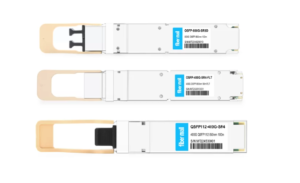
800G SR8 and 400G SR4 Optical Transceiver Modules Compatibility and Interconnection Test Report
Version Change Log Writer V0 Sample Test Cassie Test Purpose Test Objects:800G OSFP SR8/400G OSFP SR4/400G Q112 SR4. By conducting corresponding tests, the test parameters meet the relevant industry standards, and the test modules can be normally used for Nvidia (Mellanox) MQM9790 switch, Nvidia (Mellanox) ConnectX-7 network card and Nvidia (Mellanox) BlueField-3, laying a foundation for
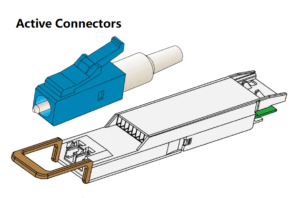
Active Connectors: LC, CS, SN, MPO, PC, APC
Active connectors are passive optical devices frequently used in conjunction with optical module interfaces. These connectors, which are attached to the optical side of a module, generally adhere to standardized processes to form universally accepted physical and performance interfaces, thereby enabling interoperability among various manufacturers. Standardization, as a process, involves
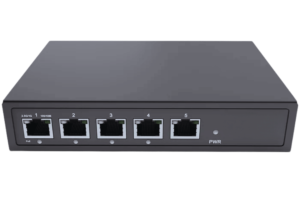
Unlock the Potential with a 2.5 GB Switch: The Ultimate Guide to Multi-Gigabit Networking
Traditional gigabit Ethernet is being replaced with multi-gigabit networking because modern computing and connectivity demands have outgrown it. This shift is driven by the need to lower cost and improve access to fast network performance—what is popularly termed as the 2.5 GB switch. You may be a tech aficionado looking

Choosing the Best 16-Port Gigabit Ethernet Switch for Your Home Network
Setting up an easy-to-use and fast home network is becoming simpler as new technology comes out. A 16-port Gigabit Ethernet switch streaming HD content, online gaming, or smart home device integration becomes a critical piece for wired connections across competing devices. Performance and budget features often contradict each other creating
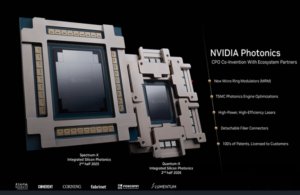
NVIDIA Releases Silicon Photonics CPO Switch
During GTC 2025, NVIDIA released the NVIDIA Spectrum-X (based on the Ethernet standard) and NVIDIA Quantum-X (based on the InfiniBand standard) silicon photonic network switches, enabling AI factories to connect millions of GPUs across regions while significantly reducing energy consumption and operating costs. NVIDIA Silicon Photonics CPO The partners listed

How to Use the XGSPON ONU Stick SFP+
Fiber-to-the-Home (FTTH) technology is revolutionizing internet connectivity. However, the closed devices provided by internet service providers often restrict users’ freedom. If you have a router or switch with an SFP+ interface, such as the Ubiquiti Dream Machine Pro, Mikrotik CCR series, or an OPNsense device, the XGSPON ONU Stick SFP+
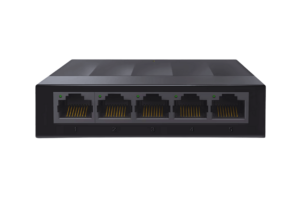
The Ultimate Guide to Choosing a 5-Port Gigabit Ethernet Switch for Your Home Network
An efficient home network system is the foundation of contemporary technology, facilitating the smooth operation of activities such as streaming, gaming, and home offices. Gigabit Ethernet routers are an integral component of the home network system, and a five-port gigabit ethernet switch marks the initial stage of network enhancement. Smaller
